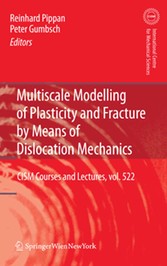Suchen und Finden
Multiscale Modelling of Plasticity and Fracture by Means of Dislocation Mechanics
The latest state of simulation techniques to model plasticity and fracture in crystalline materials on the nano- and microscale is presented. Discrete dislocation mechanics and the neighbouring fields molecular dynamics and crystal plasticity are central parts. The physical phenomena, the theoretical basics, their mathematical description and the simulation techniques are introduced and important problems from the formation of dislocation structures to fatigue and fracture from the nano- to microscale as well as it's impact on the macro behaviour are considered.
Alle Preise verstehen sich inklusive der gesetzlichen MwSt.




















